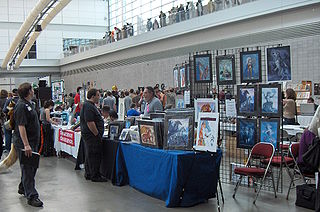 W
WThe Big Mac Index is a price index published by The Economist as an informal way of measuring the purchasing power parity (PPP) between two currencies and provides a test of the extent to which market exchange rates result in goods costing the same in different countries. It "seeks to make exchange-rate theory a bit more digestible."
 W
WThe BSE SENSEX is a free-float market-weighted stock market index of 30 well-established and financially sound companies listed on the Bombay Stock Exchange. The 30 constituent companies which are some of the largest and most actively traded stocks, are representative of various industrial sectors of the Indian economy. Published since 1 January 1986, the S&P BSE SENSEX is regarded as the pulse of the domestic stock markets in India. The base value of the SENSEX was taken as 100 on 1 April 1979 and its base year as 1978–79. On 25 July 2001 BSE launched DOLLEX-30, a dollar-linked version of the SENSEX.
 W
WThe coat of arms of the Netherlands Antilles consisted of a shield, a crown and the motto. The shield itself showed five blue stars on a golden background, within a red border. These five stars stood for the five islands of the Netherlands Antilles and also were represented in the flag. The crown atop the shield was that of the Dutch sovereign. Under the shield was a ribbon with the motto: Libertate Unanimus.
 W
WIn Australia and New Zealand, an energy rating label or energy rating is a label affixed to various appliances prior to retail sale, which allows consumers to compare the energy efficiency of product and allows consumers to know how much power a particular model will use to run. They allow consumers to compare the energy consumption of similar products, and factor lifetime running cost into their purchasing decision. The energy rating label is a mandatory comparison label under Australian regulations for store sales but not for products sold online. The label comprises an energy consumption figure for the appliance and a star rating. The energy consumption figure is an estimate of how much energy the appliance will use over a year, based on assumptions about “average usage”.
 W
WA furry convention is a formal gathering of members of the furry fandom — people who are interested in the concept of fictional non-human animal characters with human characteristics. These conventions provide a place for fans to meet, exchange ideas, transact business and engage in entertainment and recreation centered on this concept. Originating in California, United States, during the mid-1980s, there are now over 40 annual furry conventions worldwide, mostly in North America and Europe. As of 2017, the largest furry convention is Midwest FurFest in suburban Chicago, Illinois. It had a self-reported attendance of 11,019 in 2019.
 W
WIntegrated Services Digital Network (ISDN) is a set of communication standards for simultaneous digital transmission of voice, video, data, and other network services over the digitalised circuits of the public switched telephone network. Work on the standard began in 1980 at Bell Labs and was formally standardized in 1988 in the CCITT "Red Book". By the time the standard was released, newer networking systems with much greater speeds were available, and ISDN saw relatively little uptake in the wider market. One estimate suggests ISDN use peaked at a worldwide total of 25 million subscribers at a time when 1.3 billion analog lines were in use. ISDN has largely been replaced with digital subscriber line (DSL) systems of much higher performance.
 W
WOpen road tolling (ORT), also called all-electronic tolling, cashless tolling, or free-flow tolling, is the collection of tolls on toll roads without the use of toll booths. An electronic toll collection system is usually used instead. The major advantage to ORT is that users are able to drive through the toll plaza at highway speeds without having to slow down to pay the toll. In some installations, ORT may also reduce congestion at the plazas by allowing more vehicles per hour/per lane. The disadvantage to ORT is the possibility of "leakage"; that is, "violators" who do not pay. Leakage may either be written off as an expense by the toll operator, or offset in part or whole by fees and fines collected against the violators.
 W
WRosa 'Getrude Jekyll' is a pink shrub rose cultivar, bred by British rose breeder, David C. H. Austin in 1986. It was named in honour of the famous British writer and garden designer, Gertrude Jekyll (1843–1932). 'Getrude Jekyll' is one of the most popular of the David Austin's English roses. It was awarded the Royal Horticultural Society's Award of Garden Merit in 1994.
 W
WThe slow movement advocates a cultural shift toward slowing down life's pace. It began with Carlo Petrini's protest against the opening of a McDonald's restaurant in Piazza di Spagna, Rome in 1986 that sparked the creation of the slow food movement. Over time, this developed into a subculture in other areas, like the Cittaslow organisation for "slow cities". The "slow" epithet has subsequently been applied to a variety of activities and aspects of culture.
 W
WStereolithography is a form of 3D printing technology used for creating models, prototypes, patterns, and production parts in a layer by layer fashion using photochemical processes by which light causes chemical monomers and oligomers to cross-link together to form polymers. Those polymers then make up the body of a three-dimensional solid. Research in the area had been conducted during the 1970s, but the term was coined by Chuck Hull in 1984 when he applied for a patent on the process, which was granted in 1987. Stereolithography can be used to create prototypes for products in development, medical models, and computer hardware, as well as in many other applications. While stereolithography is fast and can produce almost any design, it can be expensive.
 W
WUropi is a constructed language which was created by Joël Landais, a French English teacher. Uropi is a synthesis of European languages, explicitly based on the common Indo-European roots and aims at being used as an international auxiliary language for Europe and thus contributing to building a European identity. Besides, given the spread of Indo-European languages outside Europe, it could be an international language for the world.